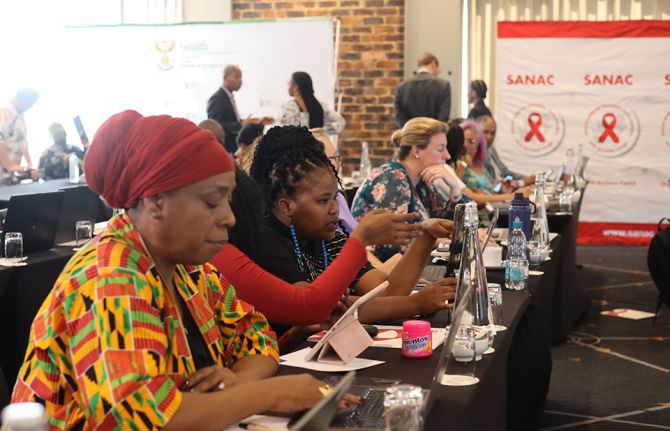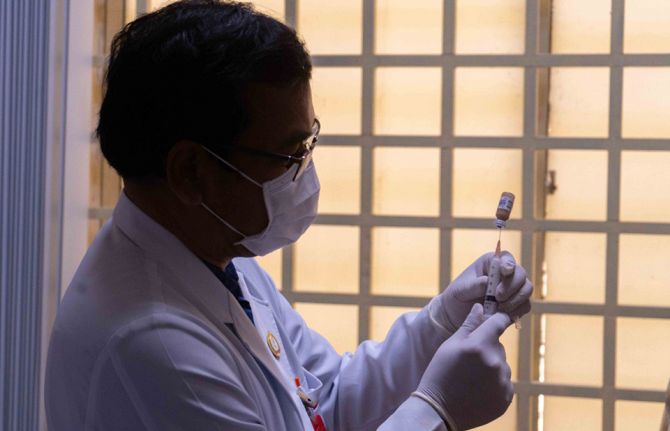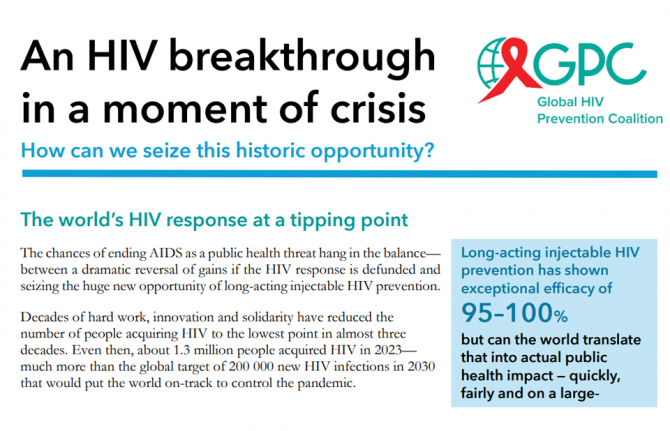

Feature Story
Cervical cancer and HIV—two diseases, one response
01 October 2018
01 October 2018 01 October 2018Cervical cancer—an illness that can be prevented by vaccination against the human papillomavirus (HPV) and that is curable if detected and treated early—is developed by more than 500 000 women each year, half of whom die of the disease. If cervical cancer prevention, screening and treatment efforts are not urgently scaled up, it is projected that this number could double by 2035.
Cervical cancer is an AIDS-defining illness, since women living with HIV who become infected with HPV are more likely to develop pre-invasive lesions that can, if left untreated, quickly progress to invasive cancer—women living with HIV are four to five times more likely to develop invasive cervical cancer. HPV infection has been found to significantly increase the risk of HIV transmission for both men and women.
Thanks to HIV treatment, many more women living with HIV are living long and healthy lives, but it is imperative that women living with HIV do not succumb to other illnesses, including cervical cancer. “It makes no sense to save a woman’s life from AIDS, only to let her die from treatable or preventable cancer,” President George W. Bush, whose George W. Bush Institute is leading efforts to end AIDS and cervical cancer, said in October 2015.
Nine out of 10 women who die from cervical cancer live in low- and middle-income countries. Given that the burden of HIV is primarily felt in low- and middle-income countries, and particularly by adolescent girls and young women, responding to both cervical cancer and HIV together in those countries is vital. Unfortunately, however, most low- and middle-income countries with a high prevalence of HIV have limited programmes for cervical cancer prevention and control.
There is a growing awareness of the need to maximize synergies between the AIDS response and efforts to prevent, diagnose and treat cervical cancer through HPV vaccination, education, screening and treatment. Likewise, existing HIV programmes can play a strategic role in expanding cervical cancer prevention services.
Reducing deaths from cervical cancer requires a wide-ranging approach that includes the following:
- Health education, including age-appropriate comprehensive sexuality education.
- HPV vaccination for adolescent girls.
- Screening all women at risk of developing cervical cancer. Screening programmes should include HIV counselling, testing and treatment, as well as other sexual and reproductive health services and treatment of precancerous cervical lesions and invasive and advanced cervical cancer.
- Ensuring access to palliative care, when needed.
“All women living with HIV need access to information on HPV and should be offered cervical cancer screening and treatment if necessary,” said Michel Sidibé, Executive Director of UNAIDS.
In May 2018, the United States President’s Emergency Plan for AIDS Relief, the George W. Bush Institute and UNAIDS launched a joint effort through a US$ 30 million partnership to accelerate efforts in eight sub-Saharan African countries to ensure that women and girls living with HIV are a priority in national cervical cancer prevention and control programmes.
“Thanks to the generosity of the American people, the United States President’s Emergency Plan for AIDS Relief has saved the lives of millions of HIV-positive women around the world,” said Deborah Birx, United States Global AIDS Coordinator and Special Representative for Global Health Diplomacy, at the launch of the partnership in May 2018. “We must ensure these same women—mothers, daughters, aunts and grandmothers—who are living with HIV and thriving do not succumb to cervical cancer.”



